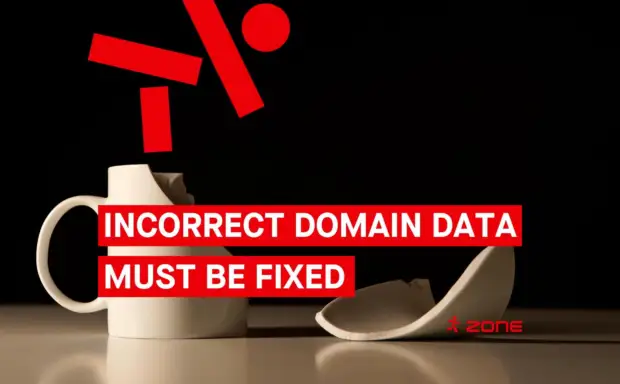This blog post is more than 44 months old and may be out of date.
If you are a regular Internet user, you have probably experienced situations where you want to visit a website, but see a strange error message with numbers instead – for example, 404, 502, etc. Most people would probably close the page after the first few seconds after seeing the error message and perhaps try to access it again later. However, it would be useful if, seeing the error message you would immediately know what kind of problem you are dealing with – for both the web owner and the visitor.
We have highlighted the most common error messages you may encounter when visiting websites.

Error 404
One of the most common error messages on the Internet is without any doubt “Error 404” or “Page not found”. Error 404 is displayed to the user when visiting a web address whose content is not available to them.
The reason may be e.g. a mistake made when entering the web address (URL), or the owner may have deleted the content from the server all together. Check the URL and if it is correct, you know the error is not yours.
500 Internal Server Error
500 Internal Server Error means some kind of problem in the website server, while its cause cannot be determined exactly. When seeing this error message, the visitor cannot do anything, and the web owner must eliminate the problem.
As a rule, this indicates a programming issue or temporary failure of the website. The main reasons for displaying this error message are following:
- forbidden instructions added to the .httaccess file. A number of instructions are forbidden for security reasons.
- A PHP script uses too much memory or CPU resources.
- An error made when setting up the PHP handler. As a rule the interpreter handling the script is included at the beginning of each CGI script (for example, #!/usr/bin/perl in for a Perl script).
- An incorrect line break format used in the PHP script. UNIX-style line breaks must be used instead of DOS-style line breaks (at least on the line specifying the interpreter).
503 Service Unavailable
Websites are also quite often plagued by the “503 Service Unavailable” error message, which means that the website server is currently unavailable.
The 503 error message may occur if, for example, the web server is under too much load, maintenance is in progress or for some other reason that would require a more thorough analysis.
It is important to bear in mind that the error lies with the website and not with the user. As a rule, the user cannot resolve the problem and has to wait until it has been fixed.
408 Request Timeout
“408 Request Timeout” means that the response to a request sent by the user was not received within the given time. The problem can be caused by the user’s or server’s slow connection.
Try to repeat your request and if the error message persists, test other websites just in case. If the problem occurs on other sites, too, you should check your Internet connection.
If, however, other websites are loaded fine, then the problem is caused by the first website’s server.
400 Bad Request and 403 Forbidden
“400 Bad Request” and “403 Forbidden” are two other well-known error messages besides the legendary 404.
Error message 400 means that the request included an error. This usually indicates that the data sent by the browser do not comply with the rules of the HTTP protocol. The server does not understand how to handle a request with an incorrectly formatted syntax. Something could have been wrong on the user’s side: an unstable Internet connection, an operating system security problem, a cache problem or a faulty browser.
You can also encounter the “403 Forbidden” message quite often, informing the user that they do not have permission to view the page. Logging in to the same page can solve the problem.
502 Bad Gateway
“502 Bad Gateway” is not very common, but nevertheless worth to remember. This error message appears when the web server fails to receive a correct response from another web server. You can try to reload the page or visit the website from another browser to resolve this problem.
If neither solution is successful, you have to wait and come back later.
429 and 431
In addition to the above error codes, users more familiar with the development activities have encountered error messages 429 and 431. As these codes are more specific, you can read more about them here and here.
Post navigation
Popular posts

.NO domain now at Zone – is your business ready for the Norwegian market?

Zone Webmail 3.0: New features that make email management easier than ever

Still the rightful owner of your domain? ICANN’s new rule means it’s time to double-check
